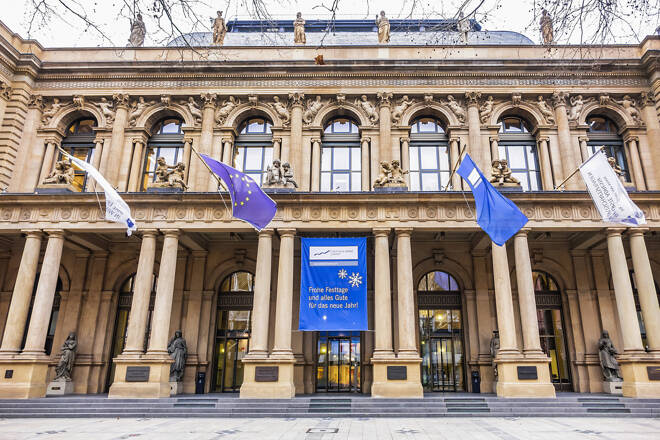Advertisement
Advertisement
DAX Index Today: Bears Eye 3-Day Losing Streak on Post-June ECB Uncertainty
By:
Key Points:
- The DAX fell by 0.18% on Friday (May 17), ending the session at 18,704.
- On Monday (May 20), ECB commentary warrants investor attention amidst increasing uncertainty about thee post-June ECB rate path
- Later in the session. FOMC member commentary also need consideration.
The Overview of the DAX Performance
The DAX fell by 0.18% on Friday (May 17). Following a 0.69% on Thursday (May 16), the DAX ended the session at 18,704.
China Sends Mixed Signals
On Friday, economic indicators from China set the tone for the session. An unexpected fall in retail sales countered better-than-expected industrial production figures. The mixed data signaled an uncertain economic outlook, testing buyer demand for DAX-listed stocks.
Retail sales increased 2.3% year-on-year in April after rising 3.1% in March. However, industrial production advanced 6.7% year-on-year after rising 4.5% in March.
Eurozone Inflation Supports June ECB Rate Cut
Inflation data for the Eurozone provided little for investors to cheer about. The annual inflation rate remained steady at 2.4%, with core inflation at 2.7% in April, unchanged from March. Services sector inflation remained a bugbear for the ECB, contributing 1.64 percentage points (pp).
The numbers continued supporting a June ECB rate cut. However, the ECB remained unwilling to commit to multiple 2024 interest rate cuts.
On Friday, ECB Executive Board member Isabel Schnabel asked for post-June caution testing investor hopes of post-June interest rate cuts.
US Fed Speakers Deliver More Monetary Policy Uncertainty
On Friday, FOMC member speeches continued to fuel monetary policy uncertainty. FOMC voting member Michelle Bowman supported a higher-for-longer Fed rate path. Moreover, the Fed Governor warned interest rates could go higher if inflation trended upward.
The uncertainty about the Fed rate path prevented a late recovery.
On Friday, the Nasdaq Composite Index declined by 0.07%. However, the Dow and S&P 500 ended the session up 0.34% and 0.12%, respectively.
The Friday Market Movers
E on SE went ex-dividend, tumbling 5.22%.
Retail stocks Zalando SE and Adidas saw losses of 3.72% and 0.61%, respectively. Uncertainty about post-June ECB rate cuts and retail sales figures from China likely influenced buyer demand.
However, German auto stocks had a mixed end to the week.
Daimler Truck Holding and Volkswagen advanced by 0.79% and 0.04%, respectively. Mercedes Benz Group and BMW declined by 0.38% and 0.46%, respectively. Porsche fell by 0.50%.
The ECB and Post-June Interest Rate Trajectory
On Monday, investors should monitor ECB commentary throughout the session. Investors expect the ECB to cut interest rates in June. However, ECB speakers remain cautious about the post-June interest rate path.
Views on the H2 2024 interest rate trajectory could influence investor appetite for DAX-listed stocks. There are no economic reports for Germany or the Eurozone for investors to consider.
US Economic Calendar: FOMC Members Under the Spotlight
Later in the Monday session, investors should monitor FOMC member speeches. FOMC voting members Raphael Bostic, Christopher Waller, Michael Barr, and Philip Jefferson are on the calendar to speak.
Views on the Fed rate path will influence market risk sentiment.
Near-Term Outlook
Near-term trends for the DAX will hinge on central bank chatter and preliminary Services PMI numbers for Germany, the Eurozone, and the US. Hawkish comments on monetary policy and better-than-expected Services PMIs could temper investor bets on H2 2024 interest rate cuts.
On the Futures markets, the DAX and the Nasdaq mini were up 46 and 31 points, respectively.
DAX Technical Indicators
Daily Chart
The DAX hovered well above the 50-day and 200-day EMAs, sending bullish price signals.
A DAX return to 18,750 would support a move toward the Wednesday (May 15) all-time high of 18,893. A break above the all-time high could bring 20,000 into view.
ECB and Fed commentary need consideration.
However, a drop below 18,650 could give the bears a run at the 18,500 handle.
The 14-day RSI at 62.86 suggests a move to the Wednesday all-time high of 18,893 before entering overbought territory.
4-Hourly Chart
The DAX remained above the 50-day and 200-day EMAs, affirming the bullish price signals.
A DAX breakout from 18,000 would bring the all-time high of 18,893 into play.
Conversely, a DAX fall through the 18,650 handle could signal a drop to the 18,500 handle.
The 14-period 4-hour RSI at 57.59 suggests a DAX return to the Wednesday (May 15) all-time high before entering overbought territory.
About the Author
Bob Masonauthor
With over 28 years of experience in the financial industry, Bob has worked with various global rating agencies and multinational banks. Currently he is covering currencies, commodities, alternative asset classes and global equities, focusing mostly on European and Asian markets.
Did you find this article useful?
Latest news and analysis
Advertisement
